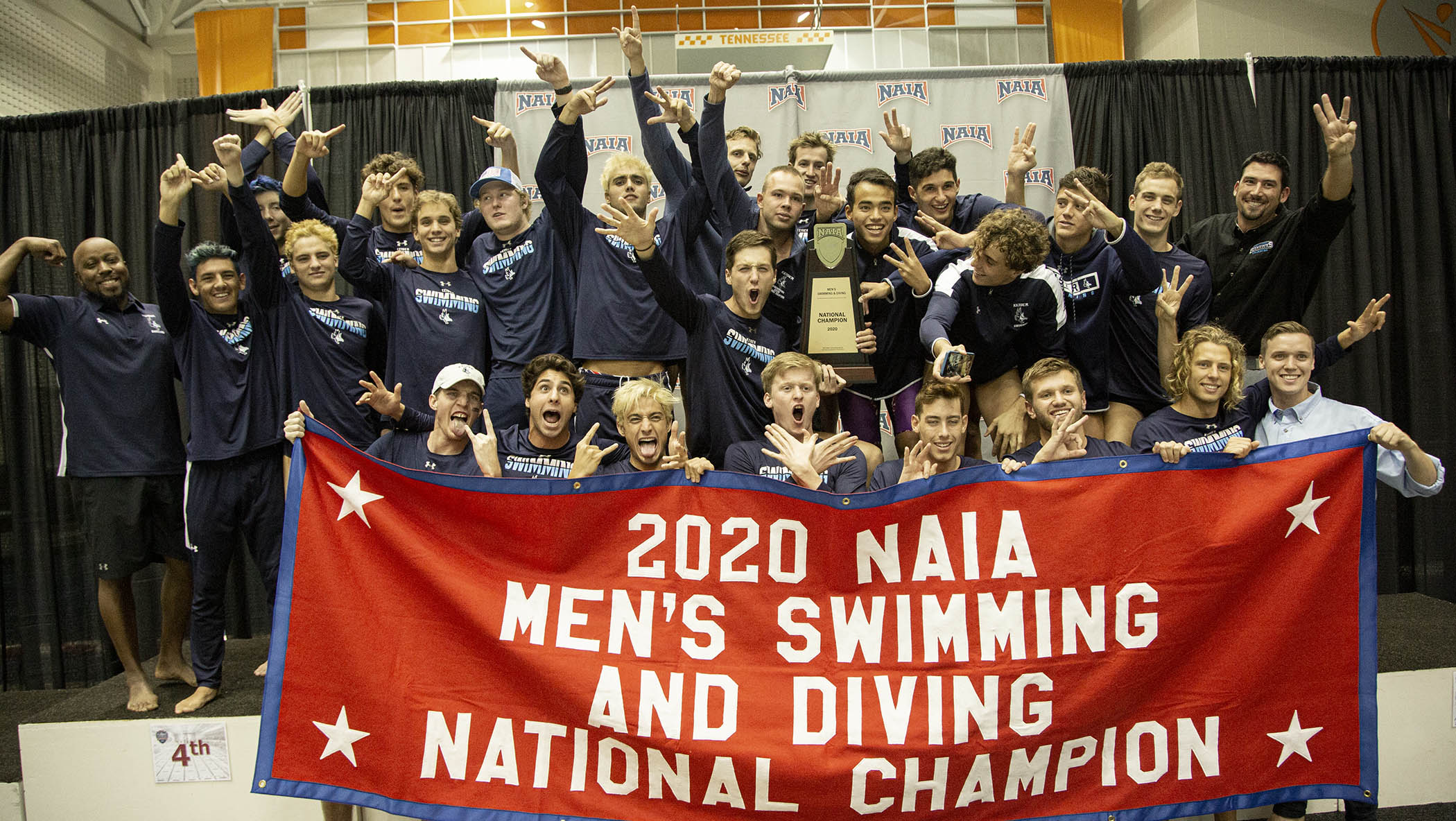
The NAIA has announced the list of qualifiers for the 2022 men’s and women’s swimming & diving championships, and the list was not published without controversy.
The 2022 NAIA Swimming & Diving Championships will be held in Columbus, Georgia at the Columbus Aquatic Center on March 2-5.
The selection procedures for the NAIA National Championship meet mirrors those at the NCAA pretty closely, with a few key exception as noted below.
The first priority for invitation is swimmers with Automatic Qualifying Standards. Those athletes can swim two additional individual events, regardless of their times in those races.
Next, teams that have Automatic Qualifying Standards in relays are invited. Once a team has an AQS in a free relay, they are eligible to swim all free relays, and once they have an AQS in a medley relay, they are eligible to swim all medley relays, though only the swimmers on the invited relays or other individual invitees are eligible (i.e., teams can’t bring ‘extra’ relay swimmer who weren’t otherwise invited as individuals or as part of an AQS relay).
Relay invited swimmers can swim any races in which they have a Provisional Standard.
This differs in a few key ways from the NCAA: with how teams are able to bring extra relays once they have an “A” cut relay, whether relay swimmers count against the invite cap (they don’t in the NCAA), and relay alternates.
From there, the process is very similar to the NCAA. Athletes are invited line-by-line from across the events until the cap is hit.
Only 8 male and 8 female divers earn invites.
The meet is capped at 300 swimmers (140 men & 160 women) and 16 divers.
This year’s meet will feature 168 total male competitors and 176 total female competitors. That is a significant reduction from previous championships: in 2020, there were 214 men and 265 women qualified for the meet. That number is also over the cap – though it’s not clear why.
While many NAIA coaches agree that the meet needed to be cut down, the pendulum may have swung too far.
In some cases, athletes who rank in the top 8 of the NAIA so far this season haven’t been invited.
One example of that is Olivet Nazarene sophomore Connor Harrison. He was the KCAC conference champion in the 200 fly, and currently ranks 8th in the NAIA in that event.
Because of the new cap rules, Harrison won’t swim at the NAIA National Championship meet, though.
Every other top 15 swimmer in the NAIA in the 200 fly is qualified, either by way of a relay invite or by being in one of the top X swimmers in each race.
While many top swimmers in a lot of events are on their schools’ relays, this effect tends to hit smaller or newer teams, that don’t have qualified relays, and distance swimmers the hardest – the latter because they are less likely to swim relay events. Other examples include Segel Acuna from Keiser, who is ranked 12th in the 1650 free.
The problem stems from the sheer number of relays that hit automatic qualifying times. There are 18 in the women’s 200 free relay, for example, and 22 in the men’s 200 medley relay. The 22 relays in the men’s 200 medley relay already absorb more than half of the qualifying spots for the meets, without accounting for the other four relays or automatic individual qualifiers.
Other schools have been hit by the 18 swimmer-per-team (with divers counting as half) as well, though that is similar to other levels of collegiate swimming & diving.
The NAIA is one of the biggest and fastest areas of growth in college swimming right now, and this tightening, and its impact on the integrity of the championship meet, could shape the future of the division.
This issue has struck across multiple teams, with several reaching out to SwimSwam to express frustration over the last 24 hours. So far, the NAIA administration has declined to change the selection policy to address the issue, according to coaches who have reached out to the organization.
The NAIA has not responded to SwimSwam’s request for comment or explanation of why the cap has already been exceeded.
